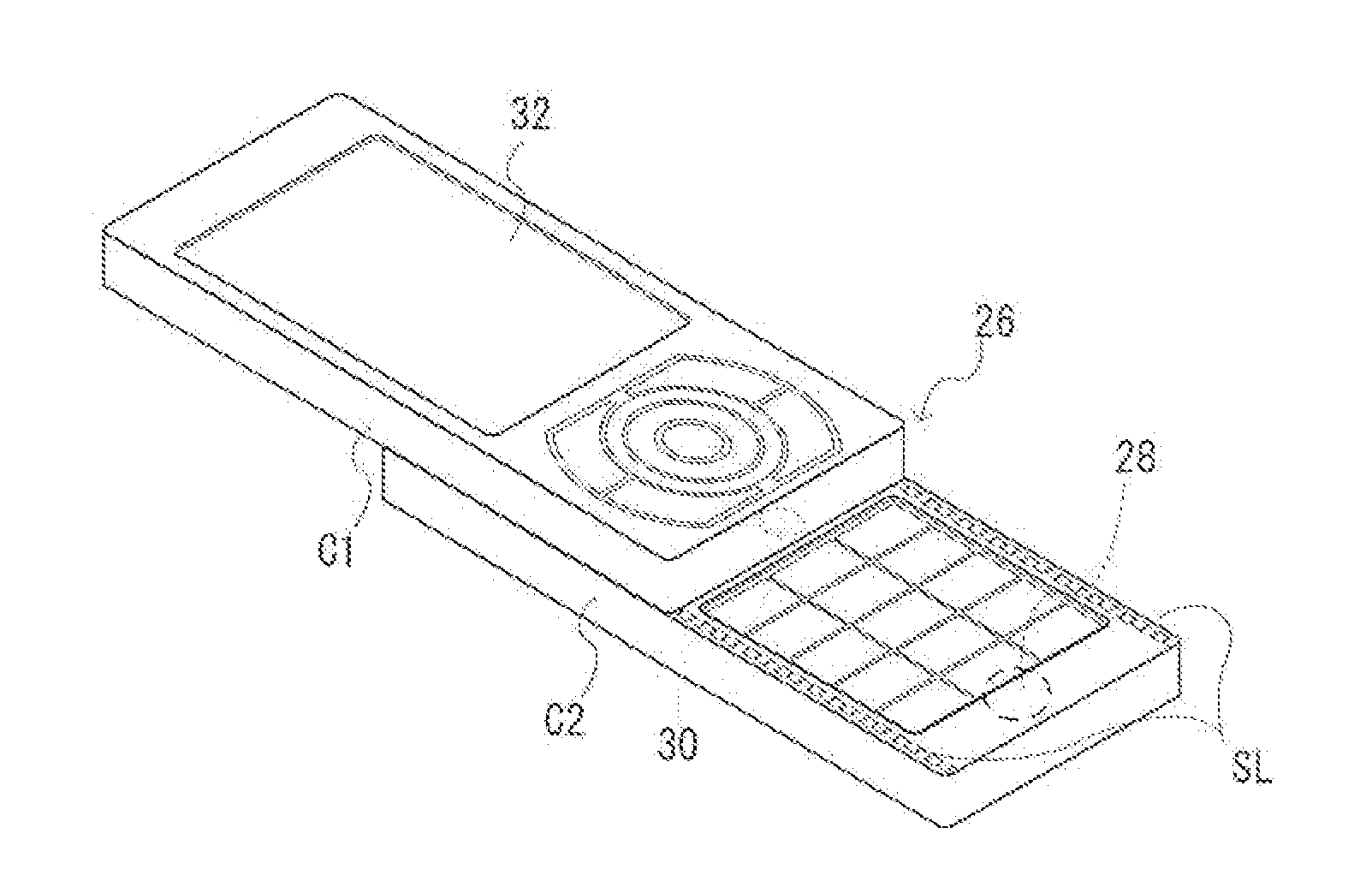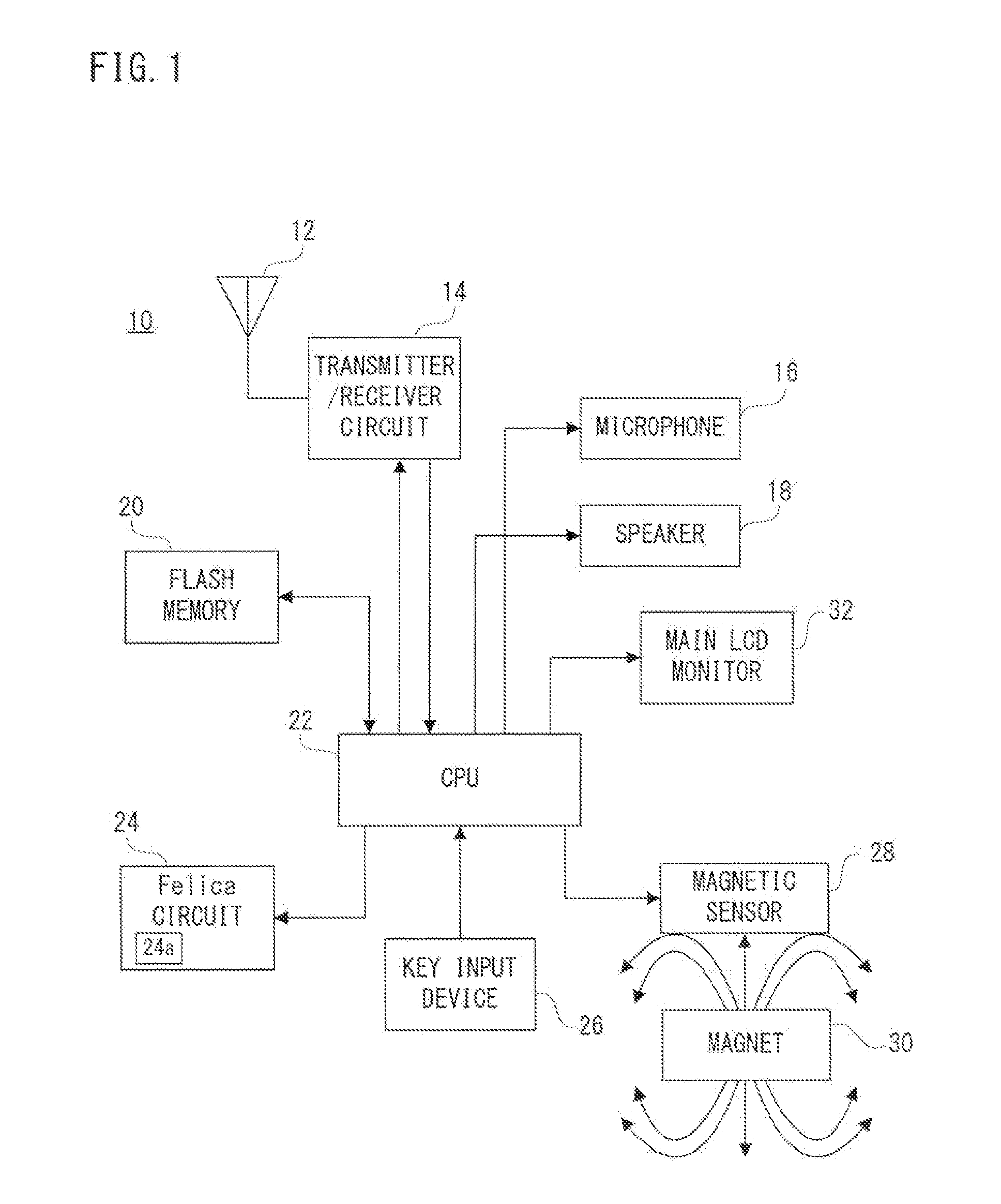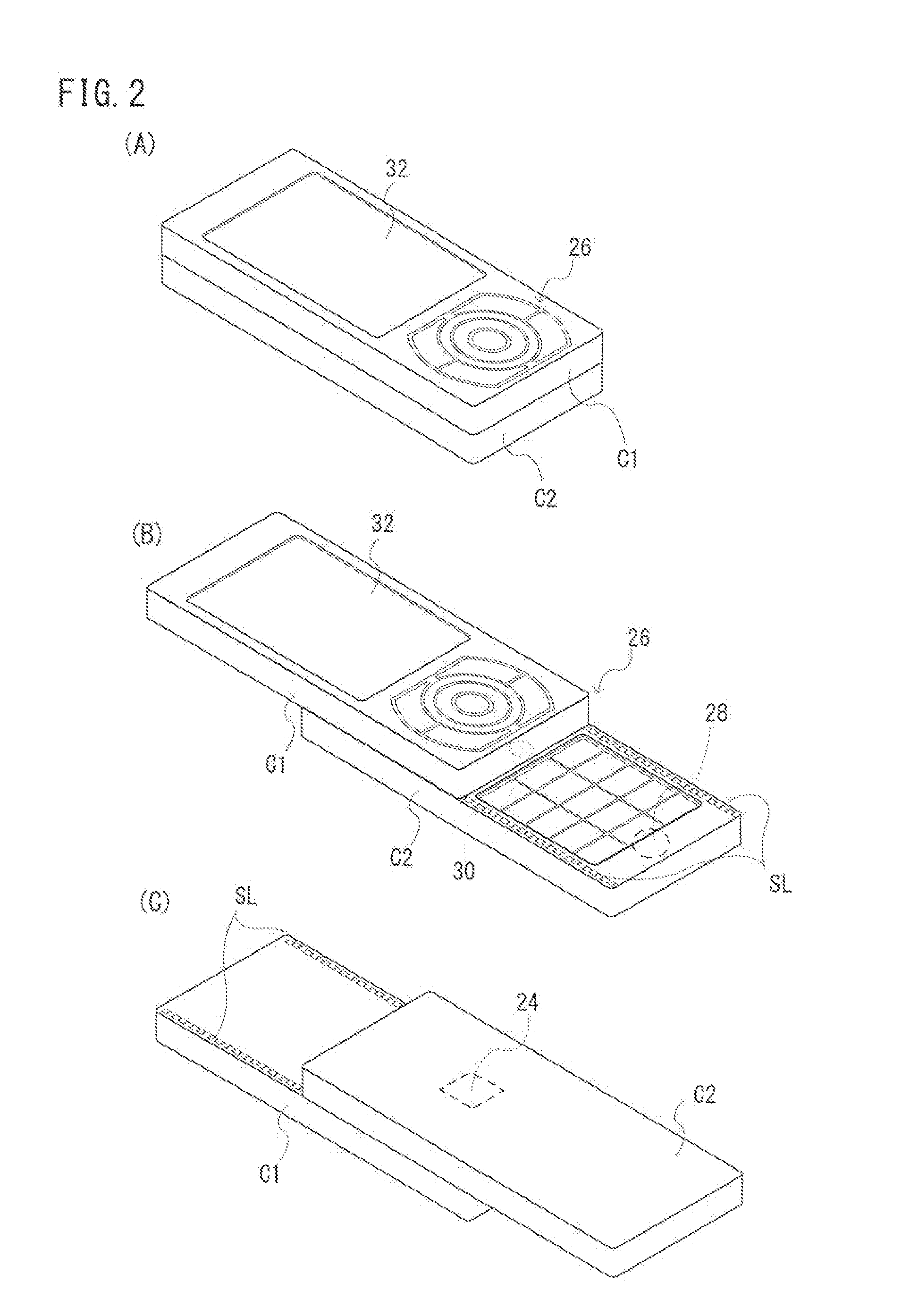Communication Terminal
a terminal and communication technology, applied in the field of communication terminals, can solve problems such as the user's inability to clearly perceive the position of the antenna
- Summary
- Abstract
- Description
- Claims
- Application Information
AI Technical Summary
Benefits of technology
Problems solved by technology
Method used
Image
Examples
first embodiment
[0068]Referring to FIG. 1, a mobile communication terminal 10 of a first embodiment includes a key input device 26. When a call-out operation is performed with the key input device 26, the CPU 22 controls a transmitter / receiver circuit 14 corresponding to a CDMA system to output a call-out signal. The output call-out signal is emitted from the antenna 12, and sent to a telephone of an intended party through a mobile communication network including base stations. When the intended party performs a call-in operation, a telephone-communication-allowable state is established.
[0069]When a conversation end operation is performed with the key input device 26 after shift to the telephone-communication-allowable state, the CPU 22 controls the transmitter / receiver circuit 14 to send a conversation end signal to the intended party. After sending the conversation end signal, the CPU 22 ends the conversation processing. In a case that a conversation end signal sent first from the intended party ...
second embodiment
[0099]In the second embodiment, the rotating mechanism K is adopted to be of configuration as shown in FIG. 1 in place of the sliding mechanism SL. Furthermore, the second embodiment is the same as the first embodiment in the configuration of the mobile communication terminal in FIG. 1 and the processing of Felica mode controlling task in FIG. 4 which are used for the explanation of the first embodiment, and therefore, in the description of the second embodiment, these drawings and the explanations are omitted.
[0100]Referring to FIG. 6(A)-FIG. 6(D), the Felica circuit 24 is contained in a case C2 such that an antenna 24a retains good receiving sensitivity on a bottom surface of the case C2. A key input device 26 is attached to the case C2 such that the operation keys are exposed from the top surface of the case C2. A magnetic sensor 28 is contained in the case C2. The magnet 30 is contained in a case C1 so as to be closest to the magnetic sensor 28 in states of FIG. 6(A) and FIG. 6(...
third embodiment
[0116]In a third embodiment, a hinge mechanism H1 or a hinge mechanism H2 is adopted in a configuration shown in FIG. 7 in place of the sliding mechanism SL. Furthermore, the third embodiment is the same as that of the Felica mode controlling task in FIG. 4 used in the explanation of the first embodiment, so that the explanation of FIG. 4 is omitted in the explanation of the third embodiment.
[0117]Referring to FIG. 7, the mobile communication terminal 10 of the third embodiment has a sub LCD monitor 34 in addition to the mobile communication terminal 10 of the first embodiment.
[0118]Referring to FIG. 8(A)-FIG. 8(C), FIG. 9(A)-FIG. 9(C) and FIG. 10, in FIG. 8(A)-FIG. 8(C), the Felica circuit 24 is contained in a case C1 such that the antenna 24a retains good receiving sensitivity on an outer surface of the case C1. In FIG. 9(A)-FIG. 9(C), the Felica circuit 24 is contained in the case C2 such that the antenna 24a retains good receiving sensitivity on the outer surface of the case C2....
PUM
 Login to View More
Login to View More Abstract
Description
Claims
Application Information
 Login to View More
Login to View More - R&D
- Intellectual Property
- Life Sciences
- Materials
- Tech Scout
- Unparalleled Data Quality
- Higher Quality Content
- 60% Fewer Hallucinations
Browse by: Latest US Patents, China's latest patents, Technical Efficacy Thesaurus, Application Domain, Technology Topic, Popular Technical Reports.
© 2025 PatSnap. All rights reserved.Legal|Privacy policy|Modern Slavery Act Transparency Statement|Sitemap|About US| Contact US: help@patsnap.com



